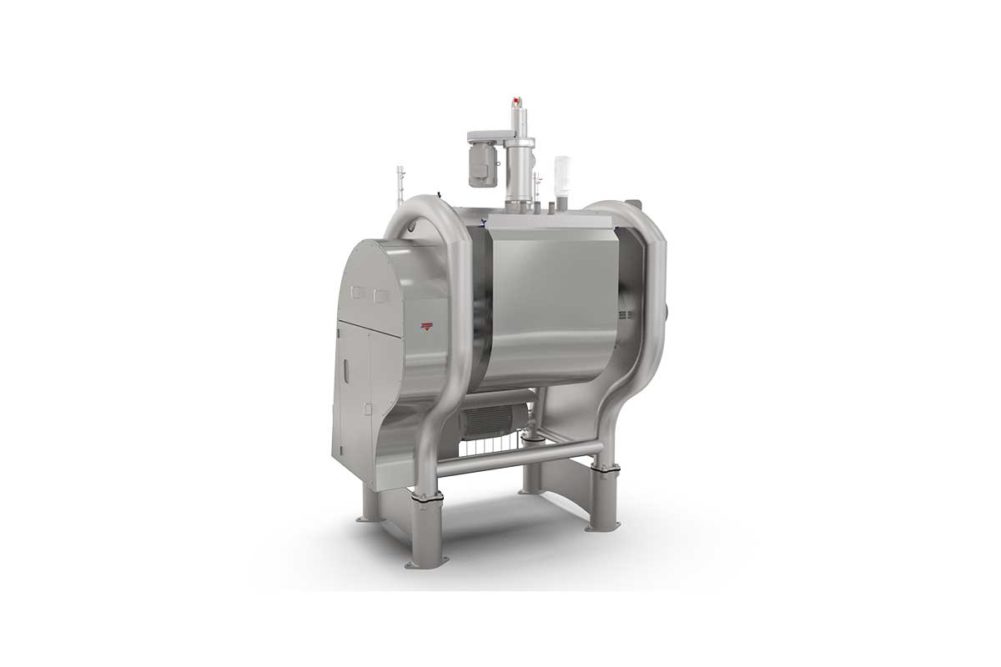When it comes to mixing, bakeries are focused on higher production rates, labor reduction, energy savings and other types of sustainability-related technology as the industry heads toward the International Baking Industry Exposition (IBIE), to be held Sept. 17-22 in Las Vegas.
Boosting capacity is being driven by continued strong consumer demand for packaged bread and other baked goods at the retail level while foodservice is making progress as it rebounds toward pre-pandemic levels.
Jim Warren, vice president, Exact Mixing, Reading Bakery Systems, said today’s mixing equipment needs to produce higher quantities in the same footprint, as well as provide further automation that makes it easier to use.
“There is a shift in the industry to fewer SKUs but higher quantities of the products the baker offers,” he explained. “The manufacturing process is being streamlined so bakers are concerned with a narrower band of the supply chain. Variety is being reduced in order to be sure bakers have their best-selling products available to their customers.”
Andrew McGhie, director of sales, Shaffer, noted bakeries are looking at a wider spectrum of equipment to produce a greater range of baked goods.
“We’re definitely seeing the need for flexibility,” he said. “Bakeries that were serving the foodservice channel have been trying to get more into retail so having flexibility in equipment that they’re putting into their facilities is top of mind for most manufacturers.”
To reduce labor, AMF Bakery Systems will feature automatic guided vehicles (AGVs) for trough movement. The company first displayed the AGVs at IBIE in 2019.
“Although we’re seeing fewer traditional sponge-and-dough operations, we’re seeing bakeries where they want floor time between the final mixer and processing the dough,” observed Terry Bartsch, executive product manager, dough systems, for AMF Bakery Systems. “Some artisan products demand floor time, so bakers are coming to us to use AGVs to store the dough for a certain amount of hours, and the AGV grabs the bowl and takes it to the bowl lift to the processing line automatically. That can all be done automatically without any people moving bowls manually.”
Melanie Gay, marketing manager for products and services, VMI, suggested that bakers are seeking modularity for their mixing operations.
“Modularity is a must as consumers become more willing to try new things and have a growing interest in more natural, healthier products,” she explained. “To meet this increasing demand, bakers must have versatile equipment that allow them to produce a variety of recipes.”
To accommodate large product portfolios, she said, space-constrained artisan bakeries need compact, mobile mixers that adapt to a wide range of applications through the use of intuitive touchscreen recipe management systems.
Ms. Gay added that traceability can’t be ignored as food safety and health remains top-of-mind with retailers and consumers. With automated systems monitoring operations, bakers can track production and manage different recipes on touch screens to monitor sanitation and food safety.
“Bowls with allergens are clearly identified,” she said. “[The system] also offers optimized cleanability to limit the risk of contamination. Production does not start if the bowl has not been cleaned. Clean, allergen-free bowls are prioritized during recipe sequencing.”
During the pandemic, the industry saw the rise of remote maintenance to keep bakeries running by resolving issues when a production goes down. Today, remote assistance also can help with the shortage of skilled maintenance personnel.
“We have more remote support tools, more analytical tools and more diagnostic tools so we can interface with bakeries so we can help them get back into production faster,” Mr. McGhie said. “All vendors are trying to lift their game so they can provide better support and service to their customers. In the event we can’t get a technician onsite, we can still help them quickly.”





